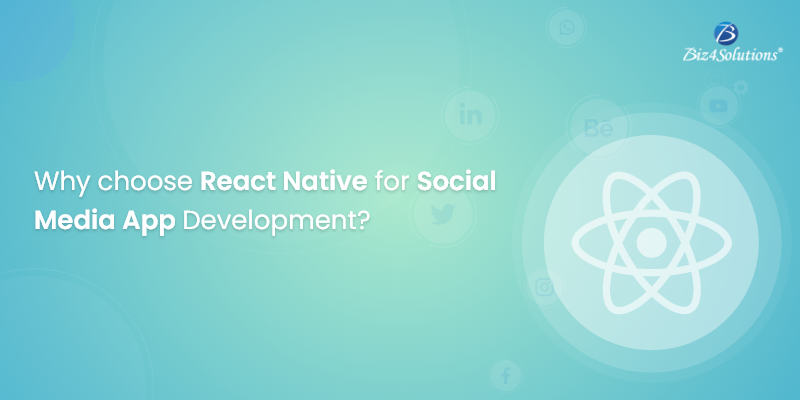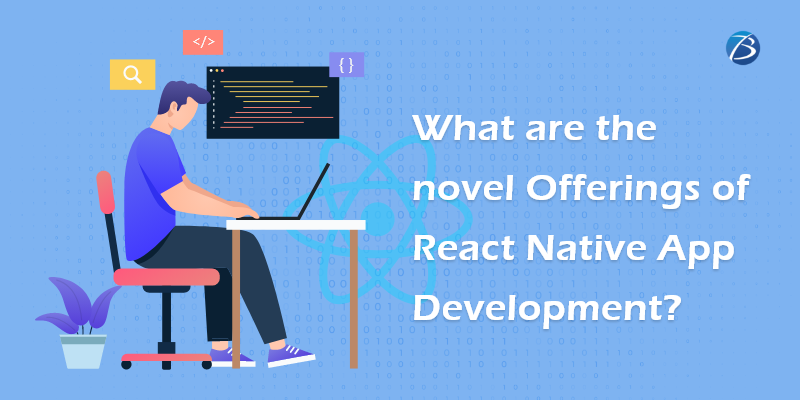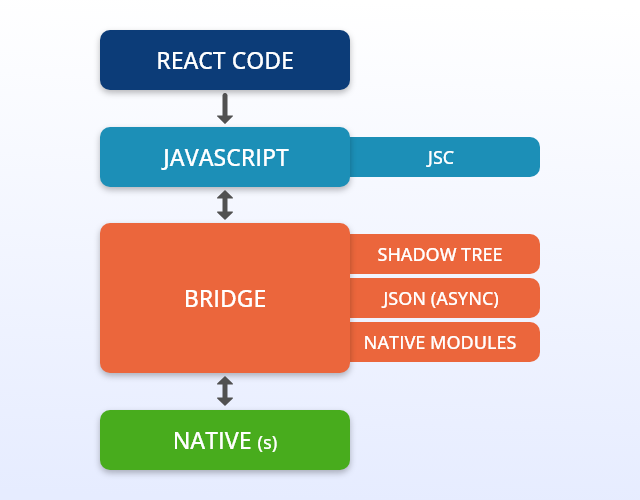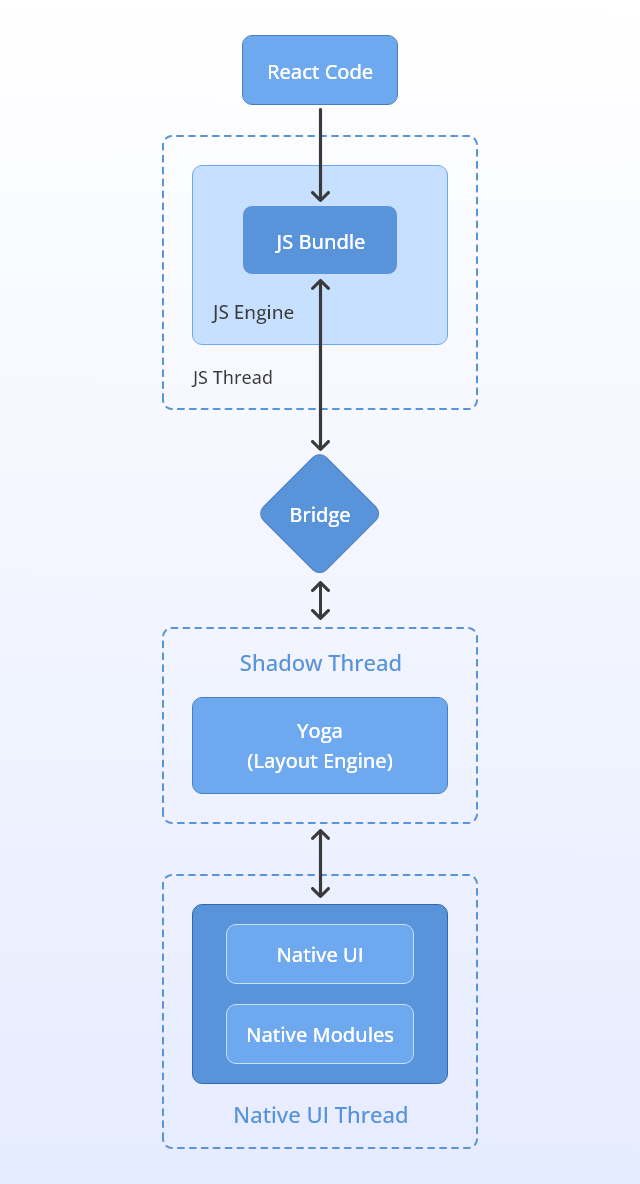Reasons to Choose React Native for building Social Media/Networking Apps!


The React Native architecture proves highly advantageous for mobile app development! Before the coinage of the React Native framework, mobile app development encountered certain bottlenecks. One such roadblock was creating a unified codebase for mobile and web apps. Business brands that lacked adequate resources and funds to engage native development teams for crafting applications for Android as well as iOS; were left with one single option – employing web viewers such as Cordova or Ionic. And so, app creators had to settle down for mobile web apps or HTML 5 apps. Unfortunately, these web view apps were ported over version of the app’s website and failed to deliver a good UX – the user experience seemed fake and clunky.
The launch of React Native in 2015, by Facebook as an open-source project, came as a breather for app owners – React Native development resolved multiple stumbling blocks that were posing challenges in mobile app development.
Have you ever wondered why a major chunk of the social media applications like Facebook, Skype, Pinterest, etc. are built in React Native? Let’s explore the reasons!
Advantages of using React Native for Social Media App Development

Cross-platform App Development
React Native allows businesses to build a software app solution that will function across the Android, iOS, and web; using the same programming language – JavaScript. For instance, before the advent of the React Native framework, developers had to use Java for Android-based apps and Objective-C or Swift for iOS-based apps.
Native Abilities
React Native simplifies the methodology of building social media/networking apps with newsfeeds and timelines. Using React Native, social media app creators need not create a hybrid app, mobile web app, or HTML5 app. React Native development leads to the creation of real mobile apps that are way different from applications developed in Java or Objective-C. This is because React Native employs the fundamental UI building blocks that are used in native Android and iOS apps; developers just need to combine these building blocks employing React and JavaScript. Hence, React Native apps look and feel like native apps and possess similar capabilities.
Furthermore, with React Native, one can leverage the mobile hardware components like cameras, accelerometer, Face ID, Touch ID, etc.
A Rich Customer Experience Guaranteed
Modern users are least likely to use an app if it takes a long time to load and so, a social media app must be performant to provide a great UX. React Native apps load faster as the framework employs UI elements that compile into one native application. These apps are competitive and guarantee a high UX to consumers.
Speedy Development
React helps you to develop scalable and reactive apps. And, React Native enables the front-end web developers to write the code for native cross-platform applications without the need to jump through hoops for learning a new language. Moreover, since React Native involves only JavaScript, one can use any of the JavaScript libraries starting from Loadash to the most obscure of packages for app development projects. These goodies further speed up the development process.
Moreover, the availability of several ready-to-use free tools and libraries allow React Native developers to speedily craft social media app features like social sharing. Furthermore, due to the presence of a huge, dynamic, and helpful dev community, changes can be executed quickly without any hassles.
Improved Search Indexing
A social media app must make its presence felt on popular search engines like Bing and Google. But search engine crawlers are unable to render JavaScript and return a blank page and as such, Google does not index the page altogether. The lack of search engine optimization adversely affects server-side rendering. However, React supports server-side rendering of JavaScript which results in a pre-rendered HTML page that is ready-for-display on the browser. And, the crawlers are able to crawl HTML without any glitches and the app appears on user searches.
Cost Savings
- The framework empowers React Native developers to entirely optimize the user interface and make it uniform such that it functions perfectly with all devices. This results in the creation of an improved UI in a cost-effective way.
- The code and components of the React Native environment are highly reusable and this helps in saving costs as well as development time. Approximately, 90-99% of the code can be shared between multiple operating systems without facing any technical issues or glitches.
- The framework makes it possible to integrate loads of customer-centric features by means of native plugins or third-party modules. And, this integration is easy to implement and involves minimal costs.
- While purely native apps need periodic updates separately for every device/OS; cross-platform apps are far more flexible as they avoid versioning. With React Native’s single coding approach, the overall maintenance including bug fixing becomes easy and hassle-free. Hence, React Native apps involve low maintenance costs.
How does React Native cater to Specific Requirements of Social Media App Development?
- The components in the activity feed in React Native enable the creation of a dynamic news feed and also enhance the user engagement, retention, and conversion rate of social media apps.
- React Native social media apps enable users to like a photo and react to it with an emoji. Also, single-page apps facilitate the actions of liking or reacting to a post/photo. And, all of us are aware of how beneficial React is for creating SPAs.
- Photos can be easily and quickly uploaded.
- With React Native, one can build real-time chat apps with two parts- server-side library and client-side library – that instantly connect users with friends and acquaintances.
- A login functionality with several sign-in options can be created employing Firebase’s authentication.
- The usage of firestore database for integrating push notifications into the app. A social media app must necessarily have the feature of real-time notifications for receiving messages and collaborating with posts of friends.
- Firebase’s real-time database helps users to change posts in real-time.
- D3.js can be used for creating the timeline that graphically represents posts in the map.
- The integration of the localization feature for providing multiple language support.
Success Stories of some Popular Media Apps built in React Native
The fundamental objective of this framework was to utilize the advantages of web development – quick iterations and engaging one single team for executing the entire project – while architecting mobile applications for the iOS and Android operating systems.
Facebook Ads Manager
This is the first full-fledged cross-platform app built in React Native by the Facebook team. The platform is leveraged by entrepreneurs as well as individuals for promoting their products and managing ads for the same.
How React Native development was helpful?
- The app possesses a clean UI, effortless navigation, and an intuitive UX.
- The framework appeared to be a perfect pick for handling several instances of complex business logic including the management of date/ad formats, time-zone differences, etc.
- Both the Android as well as the iOS versions of the app was built deploying a single app development team.
The platform is leveraged by entrepreneurs as well as individuals for promoting their products and managing ads for the same.
Pinterest creators used React Native so that codebase can be shared across Android and iOS. It took only ten days to implement on the iOS platform. Thereafter, Android implementation was completed in just two days as developers were able to share 100% of the UI code for the Android platform as well. This way the firm saved over a week as compared to the usual implementation time.
Skype
In 2017, Skype’s owner Microsoft redesigned the platform using React Native for their mobile version as well as the desktop version.
Discord
This popular React Native app is used by millions of individuals for connecting with friends/family/communities via voice, text, and video communication. React Native development has made it possible to share 98% of the code across the Android and iOS platforms. The team was able to effortlessly able to make their comprehensive iOS app run on the Android platform in just two days.
Conclusion:
Above examples indicate that the React Native framework can create innovative, highly performant social/networking apps that are rich in trending features.
Would you too like to harness the potential of React Native for tailoring feature-rich social media/networking apps? Reach out to Biz4Solutions, a distinguished mobile app development agency offering high-end React Native development services to global clientele for 11+ years. Tell us your social media app requirements and objectives; our proficient team will help you to fulfill your goal.





